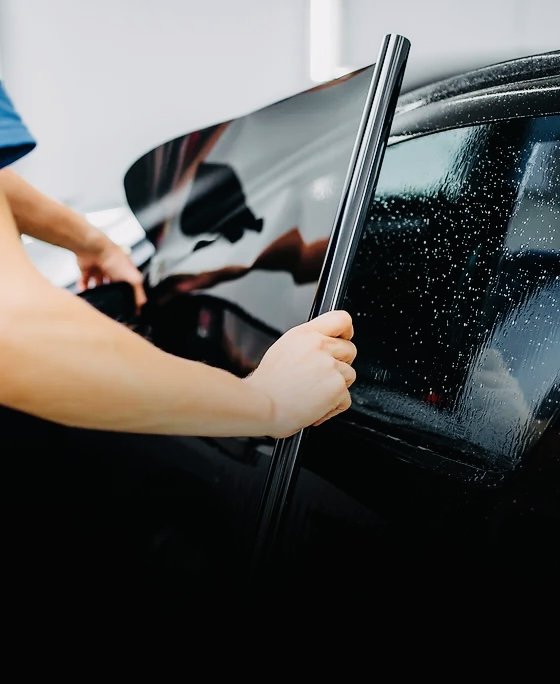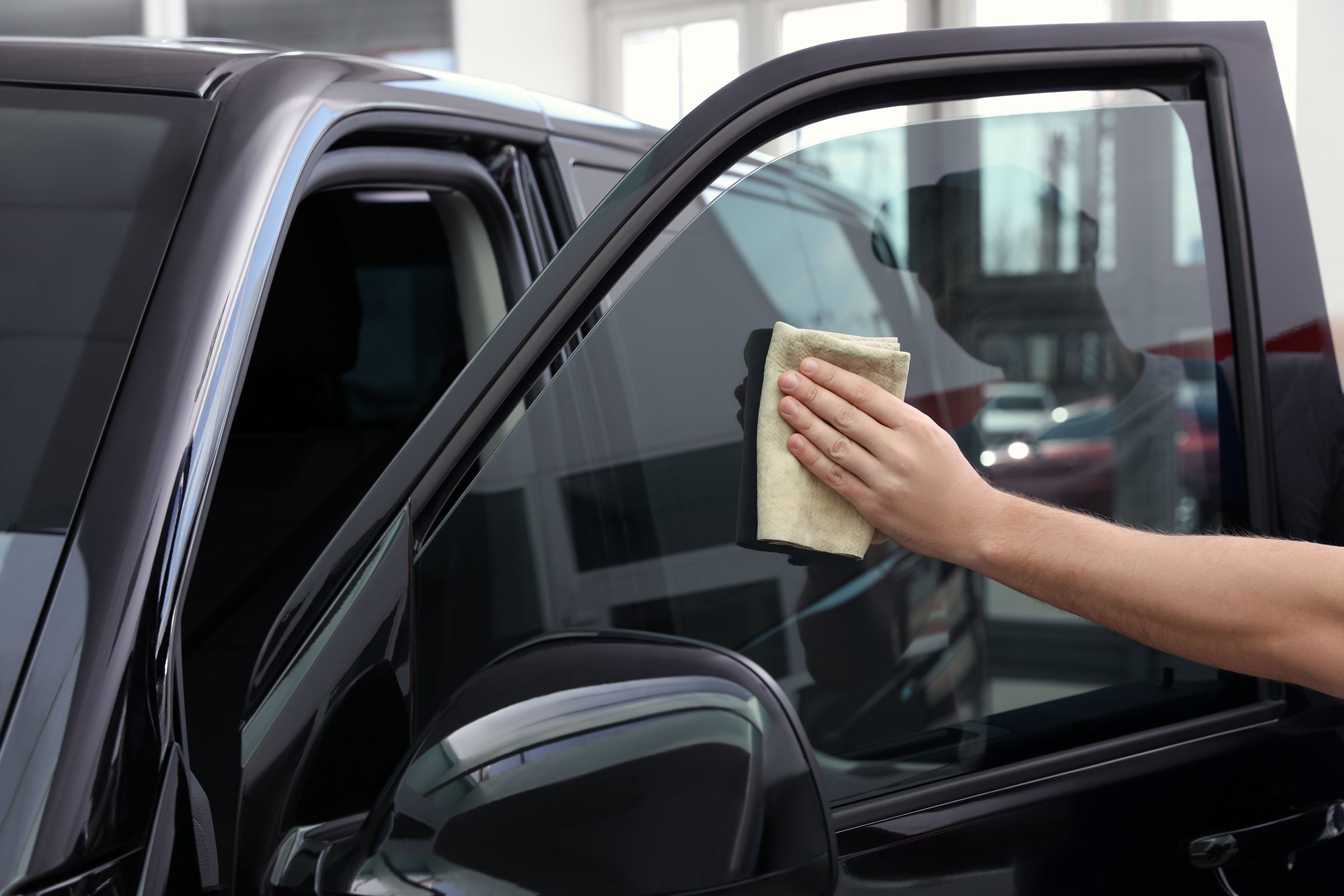A Comprehensive Guide to Comprehending Automobile Home Window Color and Its Advantages
Car home window tinting serves greater than simply an aesthetic objective for vehicles. It offers numerous types, each with unique attributes and advantages. Comprehending these alternatives, in addition to legal regulations and upkeep suggestions, is vital for any kind of car proprietor. The advantages may greatly boost driving comfort and car longevity. As one checks out the nuances of home window tinting, the concern develops: what kind of color is best fit for individual demands?
Recognizing Car Window Color: What It Is and Just how It Functions
Car home window tint works as a safety barrier that improves vehicle visual appeals while supplying useful benefits. This slim movie is put on the interior surface area of vehicle home windows, lowering glow and blocking unsafe ultraviolet (UV) rays from the sunlight. By filtering sunshine, auto home window color aids to manage the interior temperature of the automobile, causing boosted convenience for travelers and minimized reliance on air conditioning.Additionally, it secures the lorry's inside from fading, protecting both furniture and dashboard materials. The color can likewise boost privacy, making it harder for outsiders to see inside the lorry. Specific types of window tint can increase safety and security; in the event of a mishap, the film helps hold destroyed glass with each other, minimizing the threat of injury from flying fragments. Overall, car home window tint offers both useful and visual objectives, making it a preferred choice amongst vehicle proprietors.
Kinds Of Home Window Tint: A Review of Options
When considering window color choices, several types are offered, each with distinctive attributes. Colored, metalized, and ceramic window tints provide varying levels of heat rejection, UV defense, and aesthetic appeal. Recognizing these distinctions can help car proprietors make educated options based upon their preferences and requirements.
Dyed Window Color
Colored window tint represents a prominent choice among cars and truck owners looking for a budget friendly and efficient means to enhance their car's appearances and privacy. This sort of tint is produced by positioning a layer of dye between a protective coating and an adhesive layer, resulting in a darkened appearance that minimizes glare and enhances aesthetic convenience. While dyed window tint effectively obstructs dangerous UV rays, it may not provide the very same level of warm rejection as other color kinds. Furthermore, its shade can fade in time, possibly lessening its effectiveness. In spite of these drawbacks, colored window color continues to be preferred for its cost-effectiveness and ability to offer a streamlined, stylish aim to numerous automobile versions.
Metalized Window Tint
Metalized home window tint uses a balance of style and capability, making it a prominent selection among vehicle proprietors. This kind of tint integrates metal bits within the film, improving both aesthetic appeal and warm denial. The reflective high quality of metalized color helps to lower glare and improve privacy, while likewise giving UV security, which safeguards the car's interior. In addition, metalized home window color can strengthen window stamina, possibly avoiding smashing during accidents. It is important to keep in mind that the metal elements can interfere with digital signals, such as General practitioner and cell phone function. On the whole, metalized window tint gives a reliable service for those looking for a mix of appearance, sun, and longevity protection for their automobiles.
Ceramic Window Color
Ceramic window tint represents a sophisticated alternative in the range of auto home window movies, providing distinctive advantages over traditional colors. Unlike colored or metalized films, ceramic tints utilize innovative ceramic particles, which successfully reject warmth and UV rays without compromising presence. This technology guarantees that cars remain cooler, decreasing dependence on cooling and enhancing fuel effectiveness. Furthermore, ceramic window colors are much less likely to conflict with electronic devices, such as GPS or mobile signals, making them a practical selection for modern-day lorries. Their durability and scrape resistance add to a longer life-span compared to various other kinds of colors. Generally, ceramic window tint supplies exceptional performance, convenience, and security, making it a favored choice for critical vehicle owners.
Benefits of Car Window Tint: Beyond Visual Appeals
While many individuals associate vehicle home window color with enhanced style, its benefits extend much past simple appearances. One substantial benefit is heat decrease; home window tint can obstruct up to 99% of hazardous UV rays, keeping the indoor cooler and protecting upholstery from fading. This not just improves convenience throughout heat however likewise lowers reliance on cooling, causing enhanced gas efficiency.In addition, auto window color offers an added layer of personal privacy and safety and security. Colored home windows make it hard for outsiders to see this see inside the automobile, which can deter burglary and secure valuables. Additionally, numerous colors reinforce the glass, lowering the chance of ruining in the event of a mishap, thus boosting safety.In enhancement to these practical advantages, vehicle window tint can additionally add to glow decrease, improving visibility for drivers and guests alike. This diverse method to convenience and security makes home window tint a beneficial financial investment for lorry owners.
Lawful Factors To Consider: Tinting Rules by State
Prior to devoting to auto home window tint, car owners need to browse an intricate landscape of tinting guidelines that vary by state. Each state has specific regulations controling the acceptable degrees of color darkness and reflectivity for various windows, including windshields, front side windows, and back windows. These regulations often include visible light transmission (VLT) percents, which determine just how much light can pass with the tinted glass.Some states permit darker tints on rear windows while restricting front side and windshield colors for security factors. In addition, certain states might require a certificate from the producer to confirm compliance with tinting legislations. Breaking these laws can result in fines, necessary elimination of the color, or both. As a result, it is vital for vehicle proprietors to investigate their state's legislations extensively to ensure legal conformity prior to mounting window color. This diligence can save time and money in the future.
Choosing the Right Tint: Factors to Consider
When selecting the ideal window color for a car, numerous critical elements come into play. Color darkness degrees, UV security ratings, and compliance with legal laws are vital factors to consider to assure both visual appeals and functionality. Reviewing these facets will certainly help people make an informed decision that fulfills their demands and adheres to local regulations.
Tint Darkness Levels
Picking the ideal tint darkness degree is essential for achieving the preferred equilibrium in between aesthetics and performance in automobile window tinting. Various states have differing legal guidelines relating to color darkness, which can impact the selection. Usually, tints are gauged in percentages, with reduced portions showing darker shades. Darker colors use increased personal privacy and a smooth look yet can decrease exposure, especially in the evening. Alternatively, lighter colors preserve a more open feeling, making certain appropriate visibility while still giving some warmth and glare decrease. People need to consider their driving behaviors, neighborhood laws, and personal preferences when making a choice. Eventually, the best tint darkness level enhances the car's appearance while making certain security and conformity with lawful criteria.
UV Defense Ranking
Tint darkness levels play a significant duty in the general performance of car window tinting, however another crucial factor to examine is the UV defense ranking of the selected color. This rating indicates the percent of damaging ultraviolet rays that the tint can block. High-quality tints usually offer 99% or even more UV defense, safeguarding travelers and the vehicle's inside from sunlight damage. Davinci of visit this site Michigan. Long term exposure to UV rays can bring about skin problems and fading of upholstery, making a high UV protection score vital for health and durability. When choosing window tint, customers should prioritize this ranking alongside darkness levels to assure optimum comfort and security while driving. Recognizing these aspects help in making an informed choice when buying automobile window tinting
Lawful Regulations Compliance
Comprehending local lawful guidelines is essential for anybody thinking about automobile window tinting. Each state or area has details laws governing the allowable degrees of tint darkness and reflectivity for various windows. These guidelines commonly define the visible light transmission portion, figuring out just how much light can go through the colored glass. Non-compliance can bring about fines, required removal of the color, or concerns during car inspections. Furthermore, some areas might have constraints on the usage of particular tinting materials, requiring consumers to pick items that satisfy security requirements. It is crucial for lorry proprietors to research their regional legislations completely before selecting home window tint to ensure compliance and avoid prospective legal difficulties.

Installation Refine: DIY vs. Expert Providers
Just how does one make a decision between a DIY installation and hiring expert services for automobile home window tinting? The option commonly rests on budget, experience, and preferred results. A DIY strategy can be affordable, permitting people to save money on labor costs. Nevertheless, it visit this web-site requires a particular degree of ability and expertise concerning the tinting procedure. Those that are thorough and client might find success with DIY sets offered in the market.Conversely, professional solutions use experience and top quality products, making sure a perfect surface. Experts often guarantee their job, supplying comfort versus possible concerns such as gurgling or peeling. Furthermore, they are acquainted with neighborhood legislations pertaining to tinting, which can be intricate for the average auto owner.Ultimately, the decision reflects a balance between cost, individual capability, and the anticipated top quality of the tinting job. Each choice has its benefits, and the most effective option depends upon individual conditions and choices.
Maintenance Tips: Keeping Your Tint in Leading Condition

Regularly Asked Concerns
For How Long Does Home Window Tint Commonly Last on an Automobile?
Home window tint generally lasts in between 5 to 10 years, relying on factors such as quality, application, and environmental problems. Regular maintenance and proper treatment can expand its lifespan, making certain optimal performance and look in time.
Can Window Tinting Damages My Cars and truck's Original Glass?
Window tinting, when applied properly, does not damage a car's original glass. Inappropriate installation or low-grade materials may lead to issues like peeling off or bubbling, potentially impacting the glass's integrity over time.
Is Window Tinting Safe for All Types of Automobiles?
Home window tinting is typically risk-free for most automobiles, gave the movie follows neighborhood laws and is appropriately applied. Nonetheless, some customized cars might require details considerations, making it vital to get in touch with experts before setup.
Will Home Window Tinting Space My Automobile Service Warranty?
The question of whether home window tinting gaps a vehicle warranty commonly relies on the supplier's plans. Normally, if the tint does not damage the automobile, service warranties typically stay undamaged. Consulting the supplier is suggested.
Can I Eliminate Window Tint Myself if Needed?
Eliminating window color oneself is possible, however it needs careful focus to avoid damaging the glass. People need to use proper devices and techniques to ensure a successful elimination without leaving glue residue or scratches behind. While dyed window color effectively blocks dangerous UV rays, it may not offer the very same level of heat being rejected as other color kinds. Ceramic window color stands for an innovative choice in the range of automobile window films, supplying distinct benefits over traditional colors. Prior to dedicating to car window color, automobile proprietors need to browse a complex landscape of tinting laws that differ by state. These laws usually include noticeable light transmission (VLT) percents, which determine how much light can pass via the colored glass.Some states allow darker tints on rear windows while limiting front side and windshield colors for safety and security reasons. Tint darkness levels play a significant role in the overall performance of vehicle window tinting, but an additional crucial element to evaluate is the UV security score of the chosen color.
Comments on “Davinci of Michigan Explains the Difference Between Hybrid Tint Films”